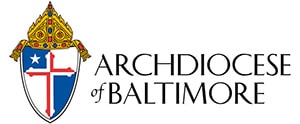VATICAN CITY – The church’s 24 new cardinals will join a unique institution that has grown dramatically in membership and has gradually been internationalized in recent decades.
Just as when it originated more than 850 years ago, the College of Cardinals remains an all-male, all-clerical body that advises the pope. Unlike the early days, however, its membership is no longer made up of the resident clergy of Rome, but of prelates from many countries.
Following the consistory Nov. 20, the cardinals will number 203, a new record. For centuries, the limit was 70 cardinals, a ceiling set aside in 1958 by Pope John XXIII.
Other significant characteristics of the college can be seen in numbers:
– The college is elderly. The average age of cardinals today is nearly 78, reflecting the fact that for many of them, the red hat is something that arrives late in life. Pope Benedict XVI was not exactly rejuvenating the college in his choice of new cardinals this fall: Their average age is about 74.
Among cardinals eligible to vote in a conclave – those under the age of 80 – the average age is close to 73. Today there are only two cardinals under the age of 60, and 82 cardinals over the age of 80.
– The college is less Italian and more international. The College of Cardinals was for centuries dominated by Italian clergy, and just 100 years ago, Italians made up more than half the membership. Those numbers are down, although Italians still represent a relatively high 20 percent of the voting-age cardinals and 24 percent of the entire college.
Cardinals today come from 70 countries on six continents. But while the college’s membership has more geographic variety, its center of gravity has remained in Europe. That has been true even under recent popes: Pope John Paul II named many cardinals from Eastern Europe; and of the 60 cardinals named by Pope Benedict, 35 have been European.
Today, Europeans represent 55 percent of the College of Cardinals and 51 percent of the voting-age cardinals. The global breakdown of under-80 cardinals among the rest of the world: Latin America 17.4 percent, North America 12.4 percent, Africa 9.1 percent, Asia 9.1 percent, Oceania 0.8 percent.
– The college has a Roman Curia streak. Members or former members of Vatican agencies represent 31 percent of the voting-age cardinals, and nearly 34 percent of the total membership in the College of Cardinals. Pope Benedict has added significantly to these numbers, handing the red hat to some 25 Roman Curia officials over the past five years.
– The college still bears the imprint of Pope John Paul II. Popes shape the College of Cardinals, but it takes time. When he died in 2005, the late Polish pontiff had named a vast majority of living cardinals and almost all of those who voted in the subsequent conclave. That legacy is shifting, but gradually. Today, 59 percent of voting-age cardinals were created by Pope John Paul II, and 41 percent by Pope Benedict XVI. (The last voting-age cardinal named by Pope Paul VI, U.S. Cardinal William W. Baum, turned 80 in 2006.)
– The college has a strong U.S. contingent. With 18 cardinals, 13 of whom can vote in a conclave, the United States is second only to Italy- in numbers, if not in influence – in the College of Cardinals. That will undoubtedly continue as archbishops in places like New York and Los Angeles receive the red hat over the next few years, and as other major U.S. archdioceses go through a leadership transition.
– The college embraces religious orders. At present, 24 of the voting-age cardinals belong to religious orders. Although it’s foolish to speak of “blocs” of voters among the cardinals, the Salesians are currently on top with five voters, three of them appointed by Pope Benedict – a fact that has not escaped observers in Rome.

